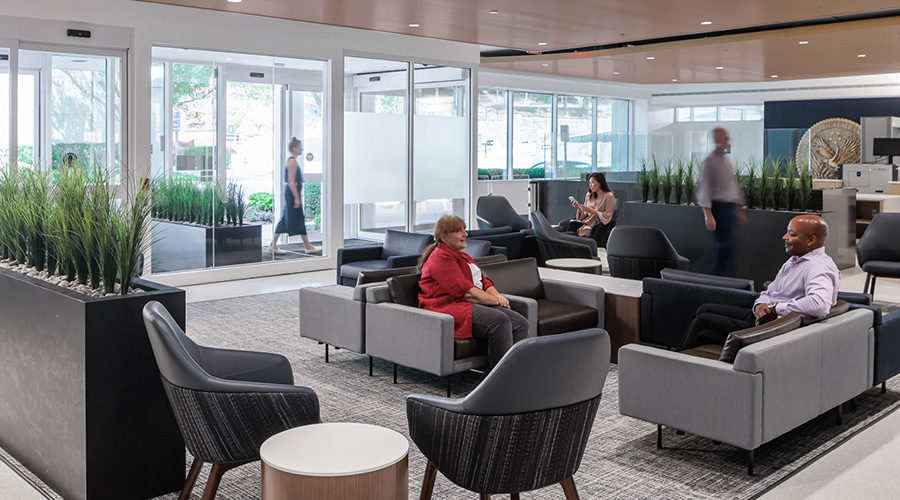The Changing Role of the Facility Manager in Open Workplace Design
Redesigning today's workplace requires more from facility managers than office redesigns of yesteryear. In addition to their traditional role, they must also — either with internal resources or with those of a consultant — do the following:
- Study workplace strategies to align their company's work patterns with the work environment to maximize performance and reduce costs.
- Conduct a utilization study to determine how employees are using their office spaces.
- Develop a mock-up of the workplace redesign and test it with employees.
- Launch a pilot project with a receptive group (frequently an IT organization, since they tend to embrace technology and things that are new).
- Work with the individuals in charge of culture change to teach employees how to comfortably and confidently work in the new environment. Many issues arise. For example employees wonder where to display the personal photos that previously lined their office or cubicle walls. (Answer: Turn them into computer screen savers.) Or they wonder where they can store all the files and reference documents they think they need. (Answer: Most of it is online, and online documents usually are more up-to-date.)
To remain competitive, corporate environments will continue to change with their workers and their work styles. In the end, these continual changes will add value by attracting and retaining the best and brightest workers in the most productive environment.
Michael C. Arenson, AIA, is a partner of SAS Architects & Planners, a full-service firm based in Northbrook, Ill., that specializes in the commercial, health care and senior living sectors. The firm was responsible for the redesign of the corporate headquarters described in the article. He can be reached at arenson@sasarch.com.
Free Addressing Is Gaining Ground
The rise in telecommuting and collaborative working (i.e., fewer cubes and more group spaces) means that employees aren't at their desks nearly as much as in decades past. A study by one corporation revealed that many of their employees spent only about one-third of their working hours at their office desks. Which begs the question: If employees use a workstation only a third of the time, do they really need a dedicated cubicle or other private workspace? Or will a different type of office layout better meet their needs?
Increasingly, the movement is toward "free addressing," a concept whereby employees don't have an assigned workspace. Depending on what they're doing at work that day, they may: work at a cubicle, come to the office for a meeting in one of the group spaces, or work on a special project in a designated quiet area. This process is referred to as "hoteling."
In one corporate workplace redesign, the ratio of individuals assigned to the area and the actual number of workstations is two to one. In other words, there are twice as many individuals assigned to the space as there are workstations.
Technology is even more critical to free addressing environments, because users bring their own laptop computers and cell phones — either their own or company-provided. There must be multiple plug-in opportunities at belt height (to avoid awkwardly kneeling on the floor to plug in), and perhaps even an electronic directory notifying visitors where someone has settled at that moment within the space.
Some companies have a mix of free addressing and workstation environments that have allowed groups to let individuals choose their style of work. This allows increased density as well as a more traditional environment for those workers who prefer it.
— Michael C. Arenson
|
Related Topics:














